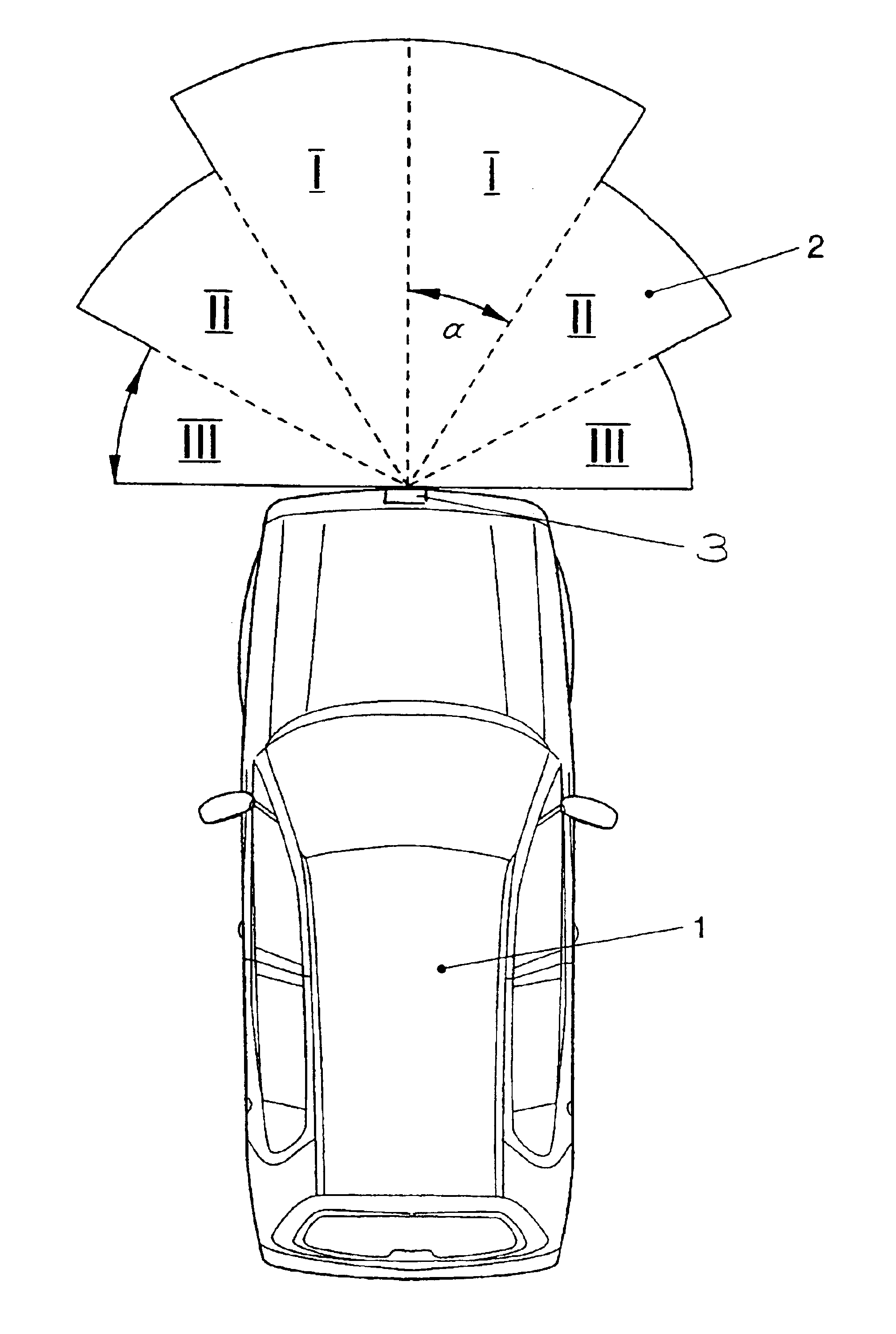Device with at least one laser sensor and method of operating a laser sensor
a laser sensor and laser sensor technology, applied in the direction of mechanical roughness/irregularity measurement, distance measurement, instruments, etc., can solve the problems of increasing the risk of people being further reduced, the single-point scan of the front traffic space is not sufficient, and the laser sensor has considerable power loss, etc., to achieve the effect of reducing the risk of peopl
- Summary
- Abstract
- Description
- Claims
- Application Information
AI Technical Summary
Benefits of technology
Problems solved by technology
Method used
Image
Examples
Embodiment Construction
The present invention is explained below in detail, using an example embodiment. FIG. 1 illustrates a scanning area of a laser-scan distance-sensing system.
Illustrated in FIG. 1 is a motor vehicle 1 having a scanning laser sensor 3 positioned in the front area of motor vehicle 1, the scanning laser sensor being, for example, a component of an automatic ranging system and a lane-change assistance device. Laser sensor 3 includes a transmitter unit, which emits laser radiation, and a receiving device, which receives laser radiation reflected by objects or obstacles, and may evaluate it according to propagation time and angle of incidence. In addition, laser sensor 3 includes a device configured to horizontally sweep the laser beam across a scanning range 2, which is 180° in the illustrated example embodiment of the present invention. However, scanning ranges of up to 360° are also possible. The device configured to sweep the laser beam may either swing the laser as a whole or may be in...
PUM
 Login to View More
Login to View More Abstract
Description
Claims
Application Information
 Login to View More
Login to View More - R&D
- Intellectual Property
- Life Sciences
- Materials
- Tech Scout
- Unparalleled Data Quality
- Higher Quality Content
- 60% Fewer Hallucinations
Browse by: Latest US Patents, China's latest patents, Technical Efficacy Thesaurus, Application Domain, Technology Topic, Popular Technical Reports.
© 2025 PatSnap. All rights reserved.Legal|Privacy policy|Modern Slavery Act Transparency Statement|Sitemap|About US| Contact US: help@patsnap.com


